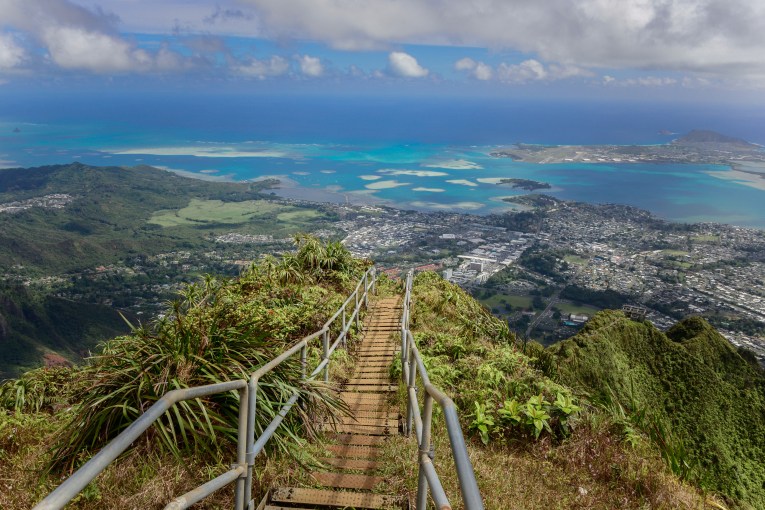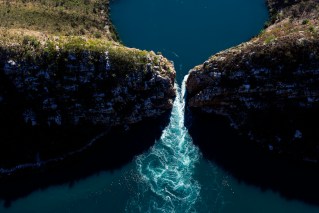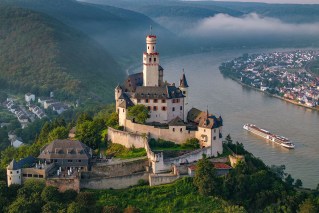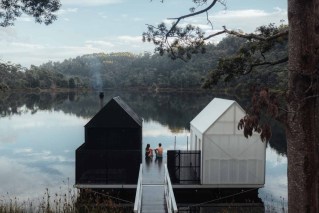The Kimberley: A must-visit for Aussie travellers

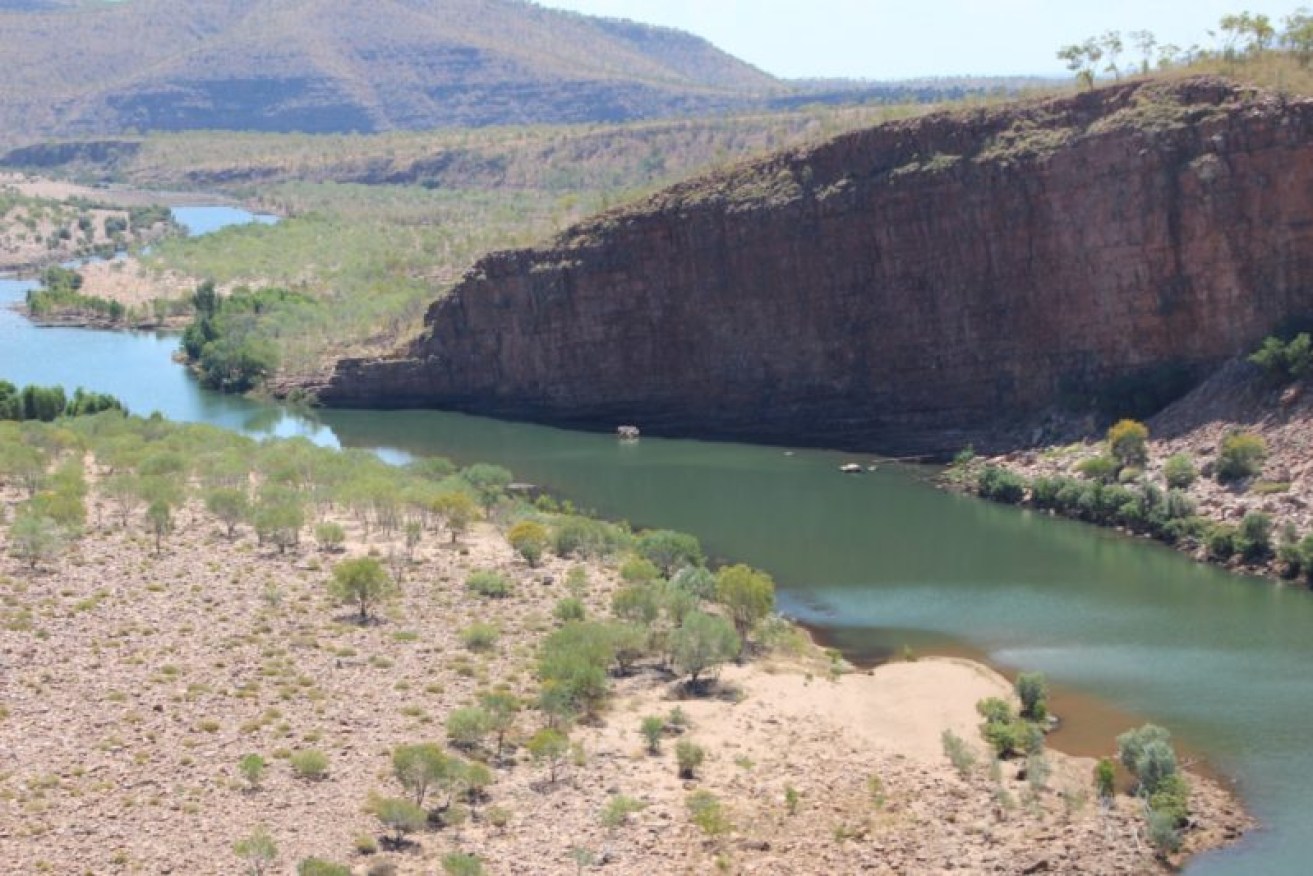
Spectacular Kimberley gorge country. Photo: Rod Myer
Many people have heard of the Kimberley but few have ventured there.
That’s a shame because the region, which sits at the top of Western Australia and sprawls over almost twice the area of Victoria, is one of the most spectacular and exciting in Australia.
It’s replete with deep-water river gorges, red-rock mountain vistas, hidden rainforest pockets and a wealth of wildlife from big crocs to colourful finches: the difficulty is to know where to start.
Here are some ideas.
El Questro
Firstly, get yourself to Kununurra, a beautiful green town at the centre of the Ord River Irrigation Scheme.
Then hire a four-wheel drive, get yourself a jerry can of fresh water for just-in-case and head east along the Gibb River Road to El Questro.
El Questro is a million acres of wilderness within easy reach of Kununurra. The 100-kilometre trip will take you about an hour on the bitumen.
El Questro has three accommodation options: the Station, the Homestead and Emma Gorge.

Cabin tents at Emma Gorge. Photo: Rod Myer
We chose Emma Gorge which is a beautiful settlement of tented cabins with en-suite facilities.
You feel close to nature with the village set along a gurgling creek that runs up to the Gorge itself.
Give yourself a few days to explore El Questro. We walked to the top of Emma Gorge (an hour each way but carry water) and swam in its beautiful waterholes set in the red Kimberley stone cliffs.

Emma Gorge waterhole. Photo: Rod Myer
Head to the Station, about 30 minutes from Emma Gorge, including 16 kilometres of unsealed road, and there is heaps to do.
Walk to Zebedee, where natural hot springs gurgle from a mountainside.
The waters have preserved a beautiful remnant palm forest from a prehistoric time when the climate was wetter.

El Questro dingo. Photo: Anne Crawford
We drove around the plains, spotting animals like dingoes and various wallaby types. We tested the mettle of our 4WD with steep climbs to lookouts and rough, stony river crossings.
We ate picnic lunches in the shade of massive river gums by cool permanent waterholes in the Pentecost River. We watched the rifle fish dash for bread pieces we threw them.
Off to the races

A winner at Wyndham. Photo: Rod Myer
Winter is racing season across northern Australia and we were lucky enough to make it to race day at Wyndham, WA’s northern-most town.
The community was out in force with many people dressed to the nines and there was even an official ‘Fashions on the Field’ event.

Fashions on the field. Photo: Rod Myer
The track is dirt and there are only four or five horses in each event. There’s a tote but it’s more fun betting with the only bookie there.
“There’s a huge crowd this year; 5000,” someone told us. One highlight was the great sense of community harmony between the Aboriginal and non-indigenous racegoers.

Kimberley cool. Photo: Rod Myer
Digger’s Rest Station
About 50 kilometres from Wyndham along a corrugated road lies Digger’s Rest Station where Roderick and Alida Woodland host horse riders and those wanting an outback experience.
Accommodation options include camping, bush huts and the bunk house.

Digger’s Rest Station. Photo: Rod Myer
We chose a corrugated iron bush hut with an adequate bathroom sometimes visited by green tree frogs.
Though the days were hot, between 33 and 36 degrees Celsius, nights were cool and waking up to a Kimberley sunrise was always a pleasure.

Your correspondent rides the range. Photo: Anne Crawford
We rode horses in the cool of the evening along the banks of the King River. The horses were responsive, reliable and did not have that annoying habit of walking with their noses in the tail of the one in front.
That’s because they’re used to mustering cattle on the station and are not spoiled by too much trail riding.

Ancient Kimberley rock art. Photo: Rod Myer
From Digger’s Rest we did day trips spotting wild life and viewing thousands of years’ old cave paintings.
Dinners were served on a wide homestead verandah at Digger’s and meals often comprised home-killed beef cooked on the barbecue.
It’s a chance to chill and chat with other guests and the WWOOFers (willing workers on organic farms), who mostly hail from Europe and whose labour keeps the station going.
Kooljaman Resort
Leave your 4WD at Kununurra, fly to Broome and pick up another for the 220-kilometre trip to Cape Leveque.
It’s a rough and sandy road out there so don’t try it in a 2WD. But the trip is part of the adventure.

Kimberley highway. Photo: Rod Myer
We stayed at the Kooljaman resort owned by the local Bardi Jawi people and what a stunning place it is.
We looked out on the broad beaches and deep red rock outcrops as the sun went down while enjoying a snack from the cliff top pizza stand.

Cape Leveque from Kooljaman. Photo: Rod Myer
We slept in a safari hut under the Cape Leveque lighthouse and prepared a meal in the communal bush kitchen.
Next day we checked out the fish hatchery owned by the nearby One Arm Point community then headed back to Broome.
When to go
Book a trip to the Kimberley between April and September to enjoy the cooler dry season weather. Travel in the wet can be impossible.
